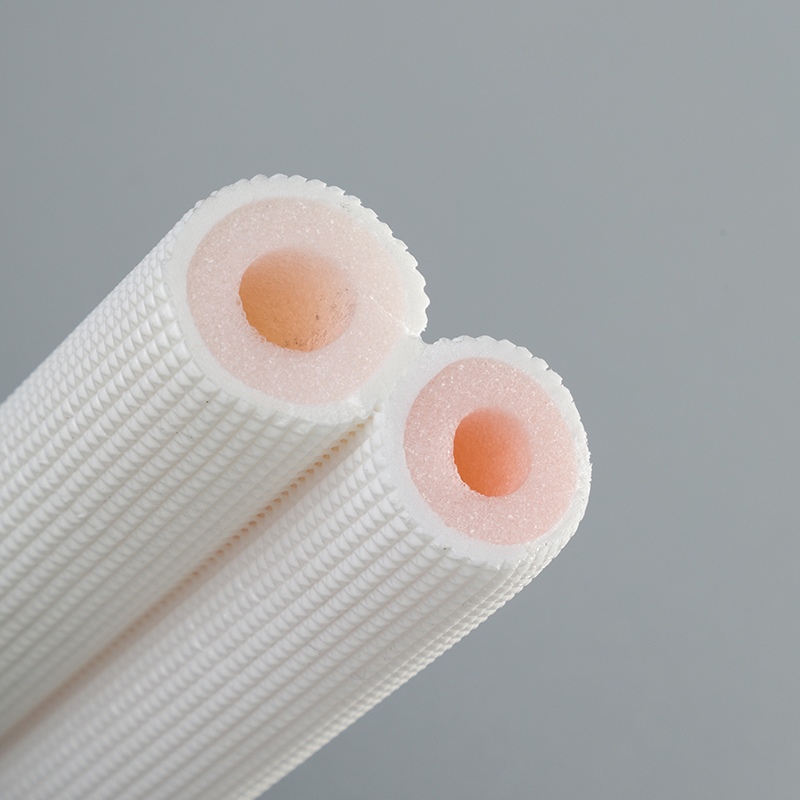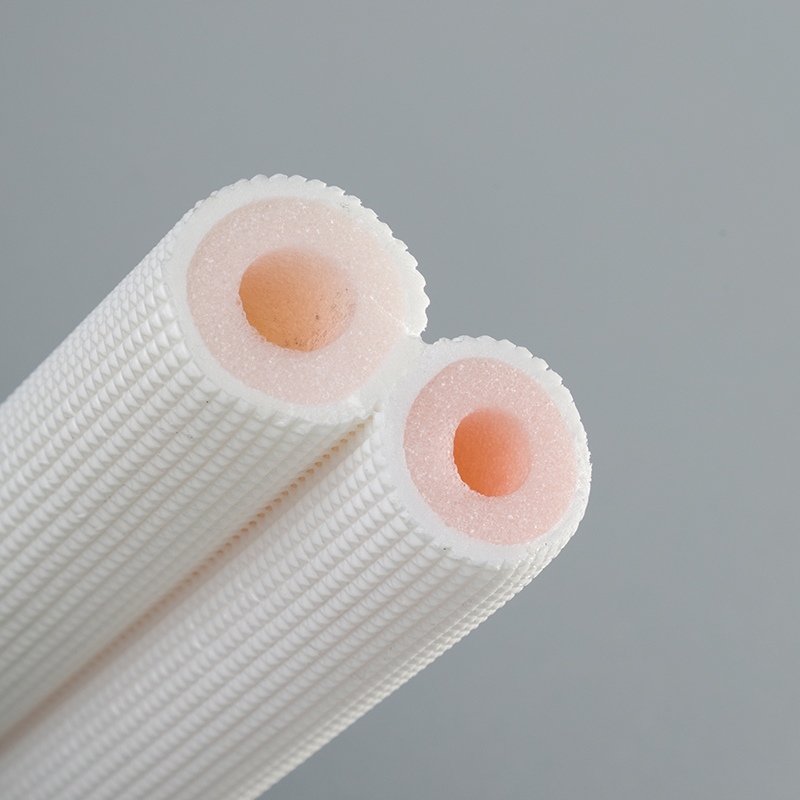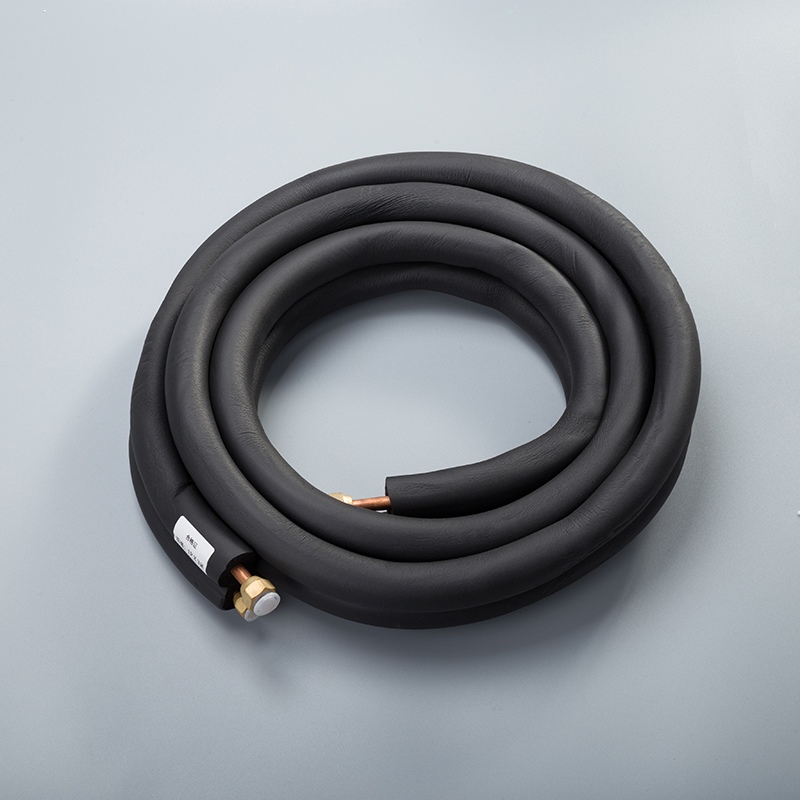Pros and Cons of Copper vs Aluminum Pipes in HVAC Systems

Write a 'Pros and Cons' blog post on 'Pros and cons of using copper aluminum pipes in HVAC systems'
In the realm of HVAC systems, selecting the ideal piping material is paramount. Copper and aluminum stand out as prevalent choices in this domain. Copper tubes are favored for their exceptional performance, durability, and resistance to corrosion, while aluminum fins offer a cost-effective solution when paired with copper tubes in HVAC coils. Manufacturers carefully weigh factors like cost, efficiency, repair ease, and longevity when deciding between these materials for coils. Despite its higher price tag, copper remains the preferred option for AC coil tubes due to its unmatched qualities.
Efficiency
Thermal Conductivity
Copper's thermal conductivity
In HVAC systems, copper's thermal conductivity plays a crucial role in enhancing the overall efficiency of the system. The high thermal conductivity of copper allows for rapid heat transfer within the coils, ensuring optimal performance. This property enables copper tubes to efficiently dissipate excess heat, preventing overheating issues and maintaining the system's functionality at peak levels.
Aluminum's thermal conductivity
Conversely, when considering aluminum's thermal conductivity in HVAC systems, it is essential to note that aluminum exhibits lower thermal conductivity compared to copper. While still effective, aluminum's lower thermal conductivity may result in slightly reduced heat transfer rates within the coils. This difference can impact the overall efficiency of the system, especially in scenarios where quick heat dissipation is critical for maintaining ideal operating conditions.
Impact on HVAC System Performance
How copper affects performance
The utilization of copper pipes significantly influences the performance of HVAC systems. With its superior heat transfer capabilities and durability, copper enhances the overall efficiency and reliability of the system. The exceptional corrosion resistance of copper ensures longevity and minimal maintenance requirements, contributing to sustained high performance over extended periods. Additionally, due to its anti-corrosive properties, copper pipes are less prone to degradation over time, further solidifying their positive impact on HVAC system performance.
How aluminum affects performance
On the other hand, integrating aluminum components into HVAC systems can also affect performance but in different ways compared to copper. While not as thermally conductive as copper, aluminum's cost-effectiveness and lightweight nature make it a viable option for specific applications within HVAC systems. However, it is essential to consider that despite its advantages, such as being resistant to pinhole leaks and offering a longer lifespan under certain conditions, aluminum's lower thermal conductivity may pose challenges in scenarios where rapid heat dissipation is critical for maintaining optimal operational efficiency.
Cost
When comparing copper and aluminum pipes in HVAC systems, the cost factor plays a significant role in decision-making processes. Understanding the initial and long-term costs associated with each material is crucial for manufacturers and HVAC professionals to make informed choices that align with their specific needs.
Initial Cost
Cost of copper pipes
Copper pipes are known for their durability and reliability in HVAC systems. The initial cost of copper pipes is typically higher than that of aluminum, reflecting the superior qualities it offers. Despite the upfront investment, the long-term benefits of using copper tubes, such as longevity and minimal maintenance requirements, often outweigh the initial expenditure.
Cost of aluminum pipes
On the other hand, aluminum pipes present a more cost-effective alternative in terms of initial expenses compared to copper. While the upfront cost of aluminum may be lower, it is essential to consider factors like durability and long-term performance when evaluating its overall value proposition. Manufacturers need to weigh the trade-offs between cost savings at the outset and potential maintenance expenses down the line.
Long-term Cost
Maintenance costs for copper
When assessing the long-term costs associated with copper pipes in HVAC systems, it is essential to consider factors like maintenance requirements and repair expenses. While copper is renowned for its durability and resistance to corrosion, regular maintenance routines may be necessary to ensure optimal performance over time. However, investing in preventive measures can mitigate potential issues, making copper a reliable choice with manageable long-term costs.
Maintenance costs for aluminum
In contrast, evaluating the maintenance costs linked to aluminum pipes involves considering aspects like wear and tear resilience and repair complexities. Although aluminum is more prone to corrosion compared to copper, implementing protective coatings or proactive maintenance strategies can help extend its lifespan and minimize repair expenditures. By factoring in ongoing maintenance needs, HVAC professionals can effectively assess the true cost implications of utilizing aluminum pipes in their systems.
Durability

Lifespan
Expected lifespan of copper pipes
Copper pipes exhibit remarkable longevity in HVAC systems, outlasting many other materials in similar applications. The durability of copper ensures a prolonged lifespan for the pipes, offering reliable performance over an extended period. The expected lifespan of copper pipes in HVAC systems is a testament to their robust construction and resistance to wear and tear.
Expected lifespan of aluminum pipes
In contrast, the expected lifespan of aluminum pipes in HVAC systems may vary based on environmental factors and maintenance practices. While aluminum is known for its corrosion resistance and lightweight properties, its longevity compared to copper may be slightly shorter. Despite this, proper care and preventive measures can enhance the durability of aluminum pipes, ensuring satisfactory performance throughout their operational life.
Resistance to Wear and Tear
Copper's resistance
The inherent strength and resilience of copper contribute significantly to its resistance against wear and tear in HVAC systems. Copper's robust nature enables it to withstand harsh operating conditions without compromising its structural integrity. This resistance makes copper pipes a reliable choice for applications where durability is paramount, ensuring consistent performance even under challenging circumstances.
Aluminum's resistance
While not as inherently durable as copper, aluminum demonstrates notable resistance to wear and tear when properly maintained. The lightweight yet sturdy composition of aluminum allows it to endure mechanical stress and environmental factors effectively. By implementing suitable protective measures and adhering to regular maintenance schedules, the resistance of aluminum pipes can be optimized, prolonging their functional life span in HVAC systems.
Corrosion Resistance

Susceptibility to Corrosion
Copper's corrosion resistance
Copper, being renowned for its durability and reliability in HVAC systems, exhibits exceptional resistance to corrosion.
The inherent properties of copper make it highly resistant to degradation over time, ensuring longevity and sustained performance.
Manufacturers often prefer copper tubes due to their superior corrosion resistance, which minimizes the risk of system malfunctions.
Aluminum's corrosion resistance
Aluminum, while offering cost-effective solutions in HVAC applications, possesses notable susceptibility to corrosion compared to copper.
Despite this vulnerability, aluminum coils are extremely resistant to formicary corrosion under specific conditions.
Implementing protective measures can enhance the longevity of aluminum components by mitigating potential corrosion risks effectively.
Impact on System Longevity
How corrosion affects copper pipes
Corrosion has a minimal impact on the longevity of copper pipes in HVAC systems due to their inherent durability and anti-corrosive properties.
The resistance of copper against corrosion ensures prolonged lifespan and consistent performance without compromising structural integrity.
By choosing copper tubes for HVAC coils, manufacturers prioritize system longevity and reliability under diverse operating conditions.
How corrosion affects aluminum pipes
Corrosion poses a significant challenge to the longevity of aluminum pipes in HVAC systems, necessitating proactive maintenance strategies.
Despite being resistant to formicary corrosion, aluminum is more susceptible to general corrosive factors than copper.
Regular inspections and protective coatings are essential for preserving the integrity of aluminum components and extending their operational life span effectively.
Copper-tubed coils outperform aluminum-tubed coils in efficiency, maintenance ease, and longevity.
Copper excels in durability and corrosion resistance, making it the superior choice for heat exchangers.
With higher tensile strength and lower thermal expansion coefficient, copper is less prone to damage compared to aluminum.
Copper's superior heat transfer coefficient ensures optimal performance in air conditioning units and refrigerators.
See Also
Benefits of Opting for Copper Tubing in Aircon
Exploring Efficiency: Copper vs. Aluminum in Air Conditioning
Key Advantages of Copper Piping in AC Innovation
Revealing 5 Major Advantages of Copper Tubing in Aircon
Importance of High-Quality Copper Tubing in Aircon Efficiency


